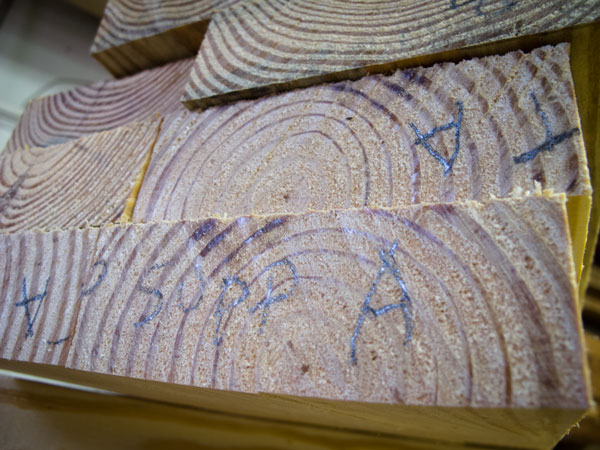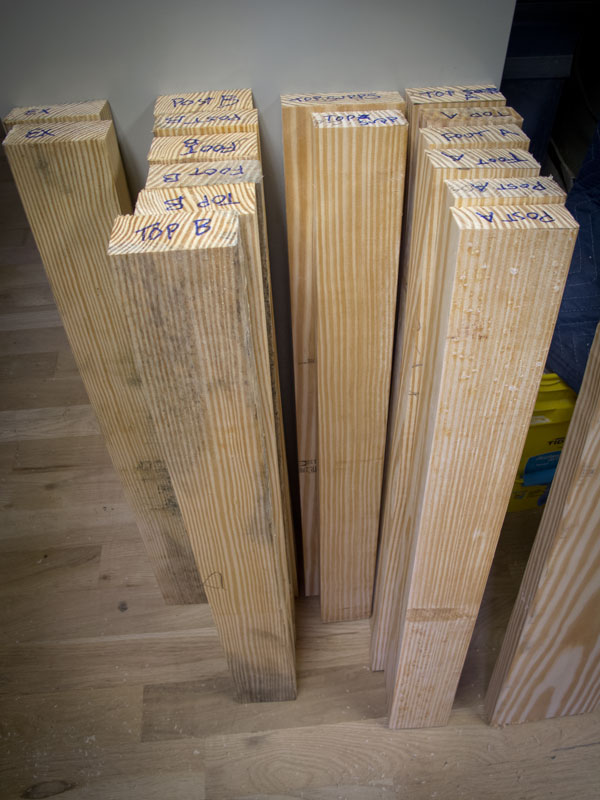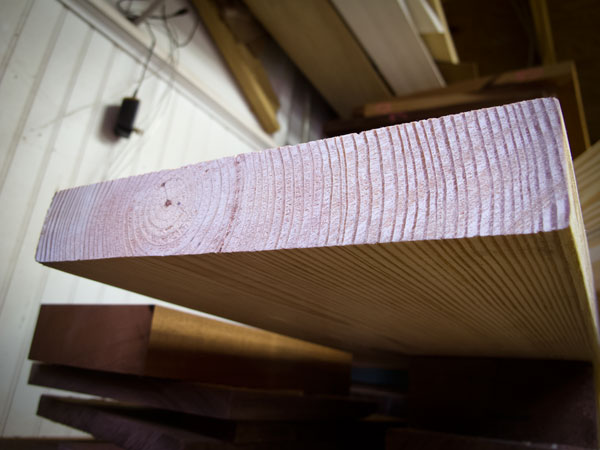We may receive a commission when you use our affiliate links. However, this does not impact our recommendations.
Here’s a lie I heard once at a lumberyard: When picking out boards, you should always choose ones that have the heart – or pith – in them because that is the strongest part of the tree. Those boards will be the strongest.
Here’s a second lie I heard at another lumberyard: Never pick boards with the heart in them because the board will surely split, ruining your project.
The truth is something else, of course.
When buying boards, particularly boards that will be ripped down, I always look for boards with the heart included. Not because it’s the strongest part of the tree. That’s malarky. The pith is the the twiggy center of the tree and will indeed split on you almost every time.
So why do I look for the heart? Two reasons.
1. Many woodworkers pass over these boards because they’ve been told to avoid them.
2. The best pure quartersawn material is always right next to the heart.
That quartersawn stock is the most stable cut. It is the straightest. And it is great for rails, stiles and other parts of your project that need dead-straight grain.
So I gobble up these pithy boards and rip the boards to the right and left of the pith. This gives me scads of stable lumber without having to pay a premium for quartersawn stock (which is usually rift and not purely quartersawn).
— Christopher Schwarz
P.S. Side note on the pith. Japanese carpenters actually do choose posts for temples that include the pith. How to they avoid the splitting? They saw a kerf into the post that breaches the heart and then pack the kerf with softwood, according to a book I read years ago on Japanese carpentry. Pretty clever.
Want to learn more about your material and how it interacts with your tools? Get Roy Underhill’s “Woodwright’s Guide,” my favorite book from my favorite woodworker. It’s available at ShopWoodworking.com here.
Here are some supplies and tools we find essential in our everyday work around the shop. We may receive a commission from sales referred by our links; however, we have carefully selected these products for their usefulness and quality.













Yep. I’ve done the exact same thing and have gotten some absolutely great, quarter-sawn, straight-grained stock from standard Douglas Fir 2x10s and 2x12s at the big box home center. Rip either side of the heart, square up the sides, skim cut on the thickness planer, then stack and sticker with weights on top and let it sit for a couple months, then continue with processing.
It’s a bit more work and processing, but since it’s a hobby, I don’t need to be super-efficient – and I get some very nice stock for cheap, cheap, cheap!
Sorry Chris but a “lie” is a falsehood intended to deceive. A “myth” is a falsehood that the teller simply believes to be true. And here, the tellers are probably trying to do the listener a favor as opposed to obtain an unfair advantage.
Otherwise, an interesting article, thanks.
-Gary
And, obviously, wider boards are going to yield more useful stock than a narrow one.
Been doing that for years… did some neat stuff with Douglas Fir 2x12s. Ripped it immediately to get rid of the pith, reduced it to rough dimensions and then let it dry before final dimensioning. It stayed nice and true while drying. Daggers to you Chris… now I’ll have competition for those boards! LOL
When I do Shaker boxes, I do the bases just like you describe — buy a 1×12 with a pith, rip down the pith, resaw in half, and cut out ovals between the knots. Voila — perfect quarter-sawn clear white pine.
One reason that Japanese temple carpenters use “boxed heart” posts and beams is that while they will split as they dry, they won’t otherwise warp or bend (very much), because the stress is symmetrical around the heart. A “free of heart center” post or beam, on the other hand, won’t split (very much), but it will warp and may also twist as well as bend along its length as it dries.
So the basic rule of thumb is: Boxed heart for structural members, and free of heart center for stuff that you’re going to be looking at in the finished structure.
-Steve
Also try to buy it in as long of lengths as possible, 16fts should have less defects than the 8fts do. Not always but most often it is accurate.